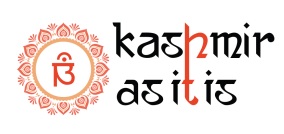Kashmiri language is the language of the valley of Kashmir. In a dialectic form, it has spread South-west into the valley of Kishtwar and to the South, it has flowed over the Pir Pantsal range into the lower hills lying north of river Chinab where it appears in a number of mixed dialects. People of Kashmir call this language Koshur. As per the census figures of 1981, there were about 31 Lac native speakers of the language in Kashmir. However, the J&K Academy of Art, Culture and Languages puts the total number of people understanding or speaking Kashmiri worldwide at about 100 Lacs.
There is no consensus of opinion regarding the origin or geneological classification of Kashmiri. There are basically two schools of thought. One places Kashmiri under the Dardic group of languages and the other places it under the Indo-Aryan group of languages.
There are many views about the origin of Kashmiri language. Kashmir Census Report for 1911 says “Kashmiri used to be hitherto treated as of Sanskrit origin. It has this time been grouped with Shina-Kohwari according to revised system of classification but the claim locally urged that it is essentially a Sanskritic language and in view of the historical fact that the valley of Kashmir before its conversion to Islam was wholly populated by Brahmanas with Shastaric lore, that claim may merit consideration.” In his write up on Kashmiri Language, N.L.Chatta says, “The inhabitants of this land are no doubt representatives of an early immigration from India proper, so it can be said that Kashmiri language has a Paschachi base. Paschachi group of languages is now known as Dard group of languages.”
Sir George Grierson is the first Europeon Scholar who has attributed Kashmiri language to the Dardic group. According to him, Kashmiri was developed in Dardistan, the mountainous region between the North West of Punjab and the Pamir. Leaving aside Arabic, Persian and Sanskrit words from the language, remaining words are Dardic or Paschachi. Kafiri (spoken in the west of Chitral), Shina (spoken in Gilgit), Kashmiri, Kishtwari and Kohistani belong to this group.
Grierson adds that Kashmiri has immensely and for centuries been influenced by Sanskrit. Some scholars believe that while discussing the origin of Kashmiri language, Grierson has neglected two aspects of Sanskrit which are responsible for making the fundamental base of this language. These aspects are Tatsam and Tadbhava words. Prakrit and Apbhramsha have also been totally ignored by him. Without these basic ingredients, the structure of Kashmiri language can not be said to have strong foundation.
The Dardic speeches fall into three branches: (1) Shina including Kashmiri, Shina proper and Kohistani, (2) Khowar or Chatrari or Chitrali and (3) Kafaristant or Nuriatani dialects in some Afghan territories.
Professor Ersnt Kuhn of Germany was the first research scholar to suggect that the dialects of Hindukush region along with Kashmiri formed a separate group within the body of Indo-Aryan languages. Many scholars claim that Kashmiri is Indo-Aryan rather than Dardic. Another view is that the language has its origin in Saryani and Abrani, the language of Jews who came to Kashmir about 2000 years back.
Kashmiri has borrowed, with adaptation, a large number of vocabulary items from Sanskrit, Persio-Arabic sources and most recently from English. These borrowings have resulted in various phonological changes and the development of certain morphological characteristics.
Kashmiri is written in three scripts viz Sharada, Persio-Arabic and Devanagari.
Hindus, it is said, used Sharada to write Sanskrit in ancient times and later used this alphabet to write Kashmiri as well. They have now mostly switched over to Devanagari. Hindus also learned Persian language and used Persian alphabet to write Kashmiri after the advent of Afghans and produced great scholars. Muslims in general use Persio-Arabic called Nastaliq. This script with additional diacritical marks has been recognised as the official script for Kashmiri by the Jammu & Kashmir government and is being widely used. The Roman script has also been used for Kashmiri but could not become popular. Kashmiri Pandits for quite some time now have been pleading with the goverment to recognise DevanagariKashmiri as an additional script for the Kashmiri language, which is yet to bear fruit.
During Hindu rule, Sanskrit was the official language of Kashmir and it continued so till the times of Sultan Shahab-Ud-Din. During these times, Sanskrit was written not in Devanagari but Sharada script, from Kashmir to Kabul. Almost all the ancient Sanskrit literature of Kashmir is written in this script which include Mahanay Prakash and Lalla Vaakhs compiled by Bhaskar Razdan.
Sharada script was much in use not only in Kashmir but also in North Western India (Gilgit etc), Punjab and Himachal Pradesh and even in Central Asia. This script enjoys a foremost position among all the ancient Indian scripts. It was evolved from the Western branch of Brahmi nearly 1200 years ago. An alphabet, par excellence, the Sharada has remained for several centuries a popular script of an extensive area of North West India including Gandhara or North Western part of Pakistan, Ladakh, Jammu, Himachal Pradesh, Punjab and Delhi. This much is certain that it must have originated in Kashmir which from the earliest times has been the principal seat of Sharada, the Goddess of learning. When did Nagari alphabet replace Sharada alphabet, is not conclusively known. Mr. Jia Lal Kaul, a member of the Scripts Committee constituted by J&K Govt. in 1953 recommended Nagari script for Kashmiri language. His suggestion was seconded by Nadim and Amin Kamil but was rejected by majority of other members.
(To be continued…..)
Article By
MK Raina
Disclaimer – KAII does not hold the responsibility for the authenticity of this article. The writer/author of this writeup is responsible for the content displayed. If anyone has any objections, please raise it immediately to admin@kashmirasitis.com with valid reasons.




